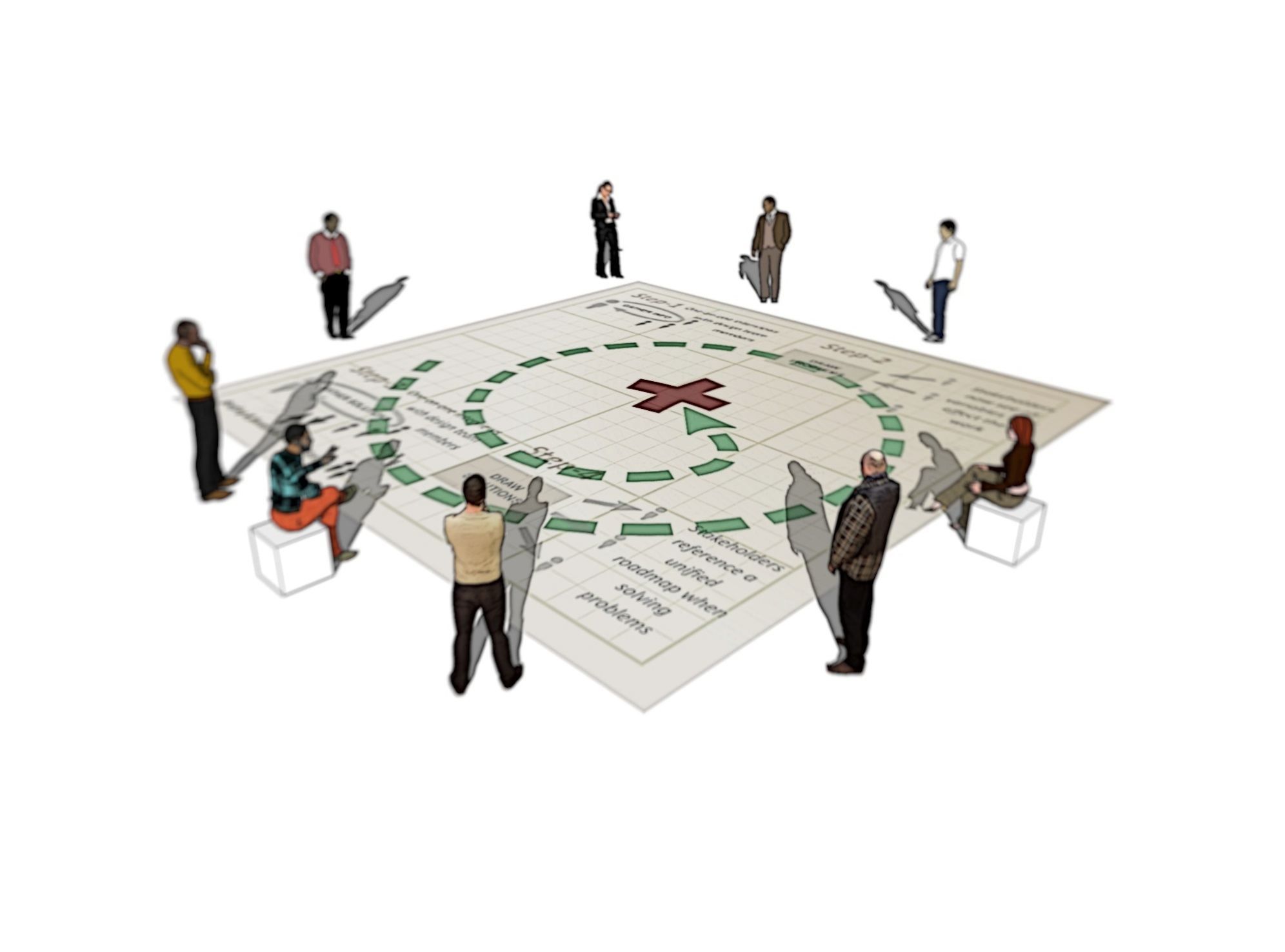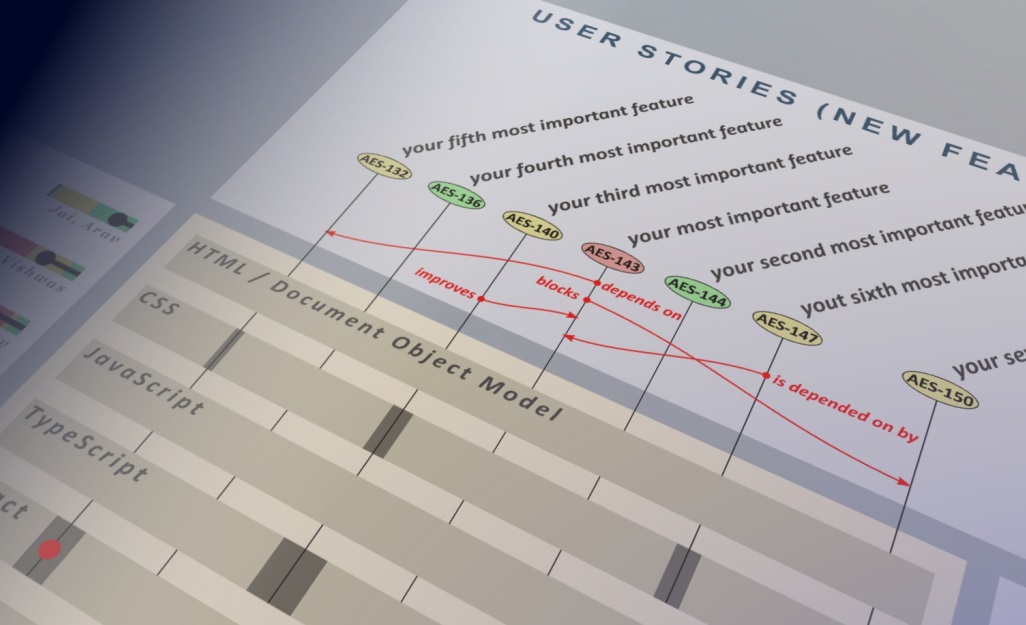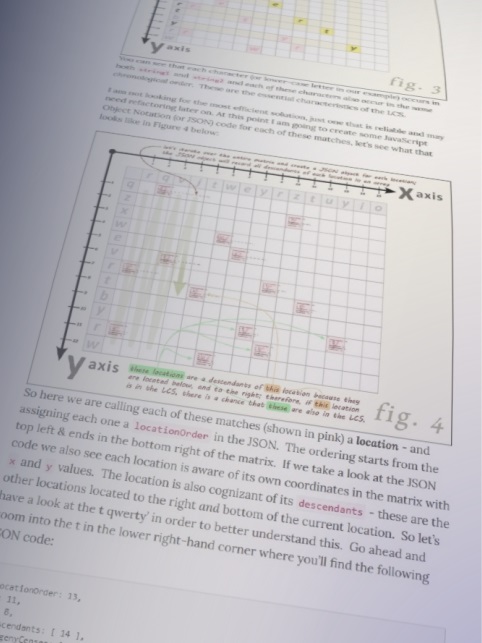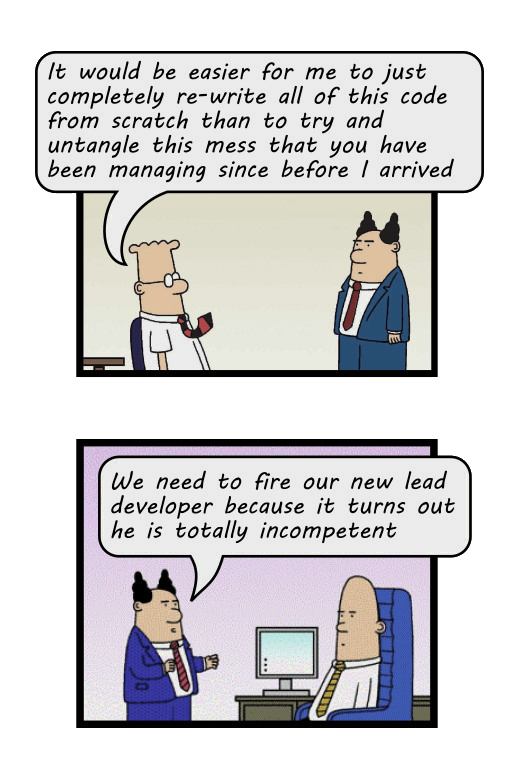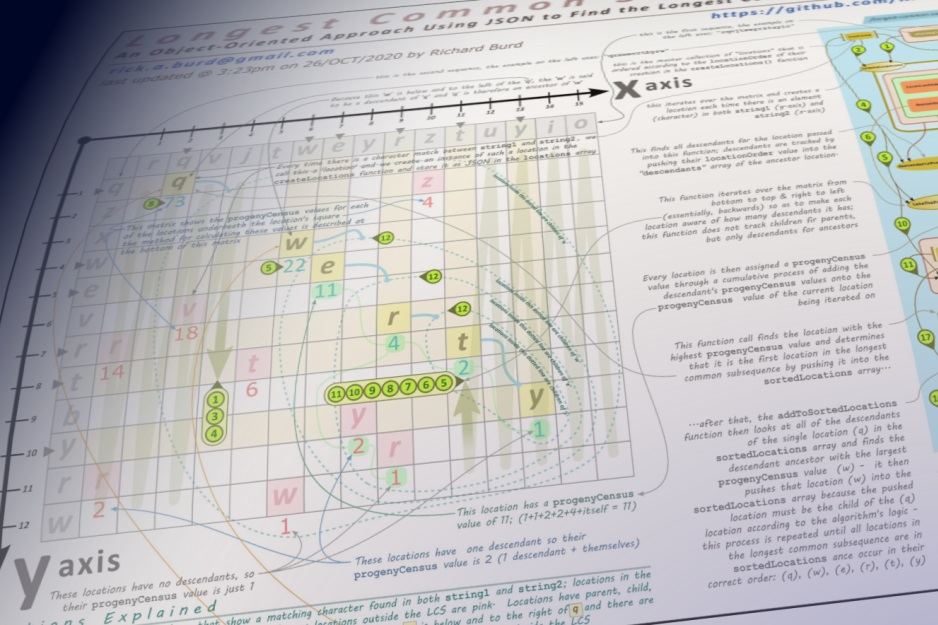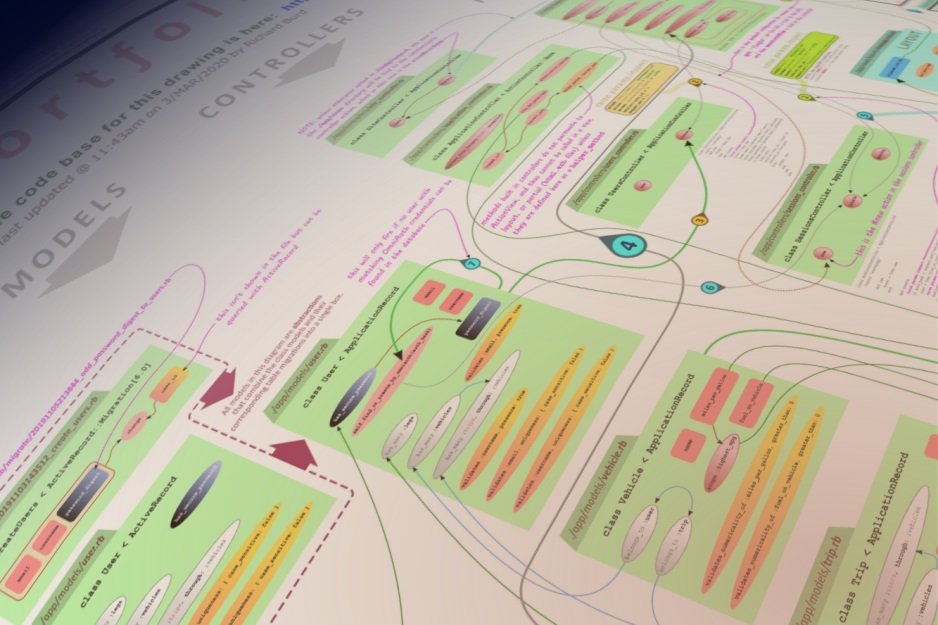
Schematic Visualization
& Treasure Mapping
Capturing your development on living whiteboards

See what is going on while you discuss it
Schematic visualizations show disparate categories of information on a single page that are normally dispersed across a range of information sources. Contemporary design projects are growing increasingly complex and teams are now stretching themselves to ever increasing levels of efficiency and productivity. Having just the right information displayed to the correct decisionmakers (with minimal noise distraction) is more important now than ever before. Schematic visualizations are a way to consolidate & distill information for decisionmakers and share nuanced details with design partners so that everyone can access information they need and ignore what they don't.

Use cases
Schematic visualizations have a variety of applications and can be integrated into your workflow to increase cross functional collaboration across a wide variety of endeavors such as:
At some point, your data metrics fail to capture key information related to your design project such as where and why there are disagreements and communication breakdowns within your team. You need to know all of the relevant variables before you make a decision.
Building consensus around diagrams instead of meetings
Treasure mapping is a process of using schematic visualizations to guide design projects. The treasure-mapper interviews the design team members individually and discovers pain points between them and other forces acting outside the team. The treasure-mapper then schematically visualizes these pain points into illustrations that can be used to develop solutions that are in turn also rendered schematically so that everyone can see (and build consensus around) the solution that is being proposed. The process is iterative and the treasure map becomes a ground-zero starting point for discussing the design project.
Keep track of the relationships you care about
Treasure maps track problems and solutions as they flow back and forth between many different stakeholder groups. They serve as a central point of reference for the whole team as they collaborate and move forward on the development of new design projects.
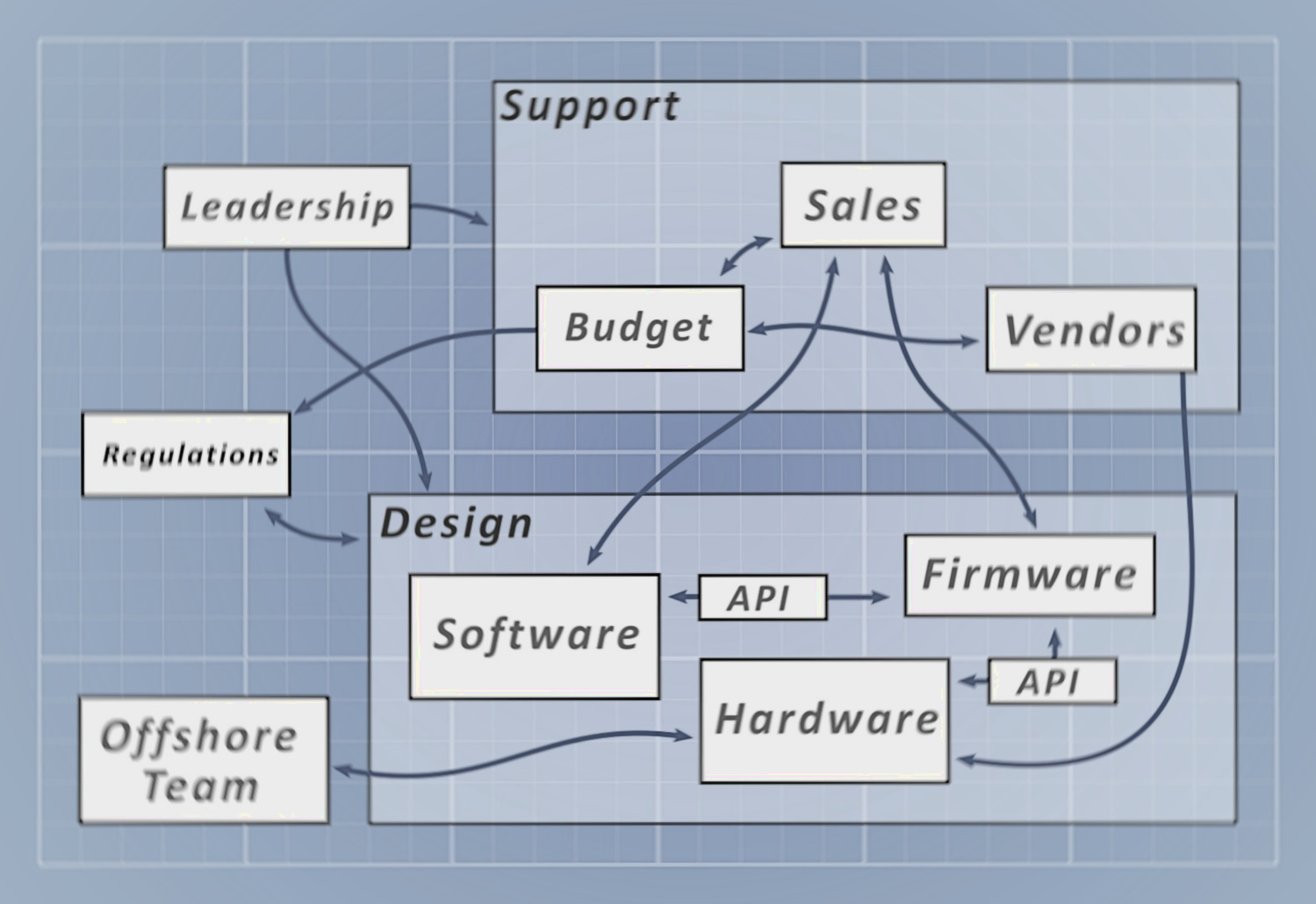
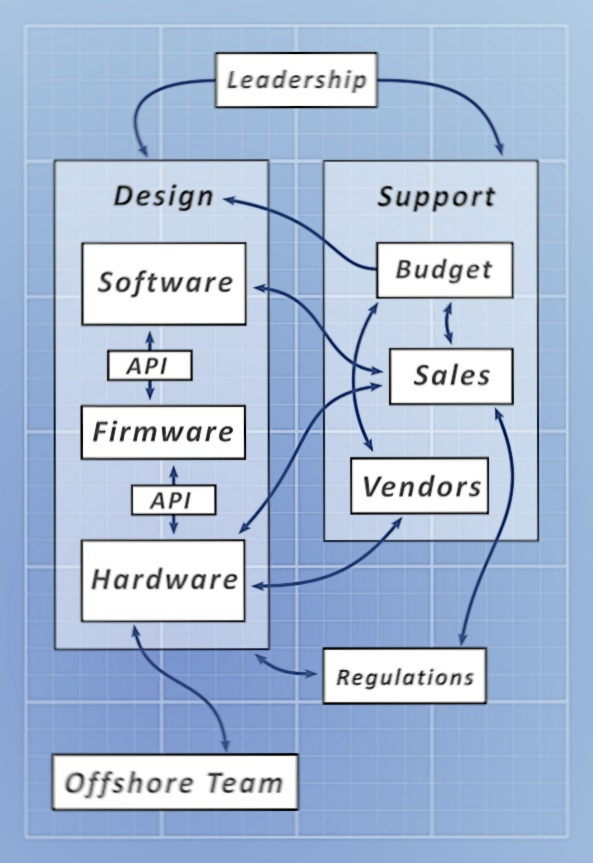
Show everyone on the team everything they need to know
Treasure mapping uses schematic visualizations to show your individual team members information they are currently unaware of, but should be in order for them to be successful. In simplest terms, they show all of the relevant variables, to all of the relevant stakeholders.
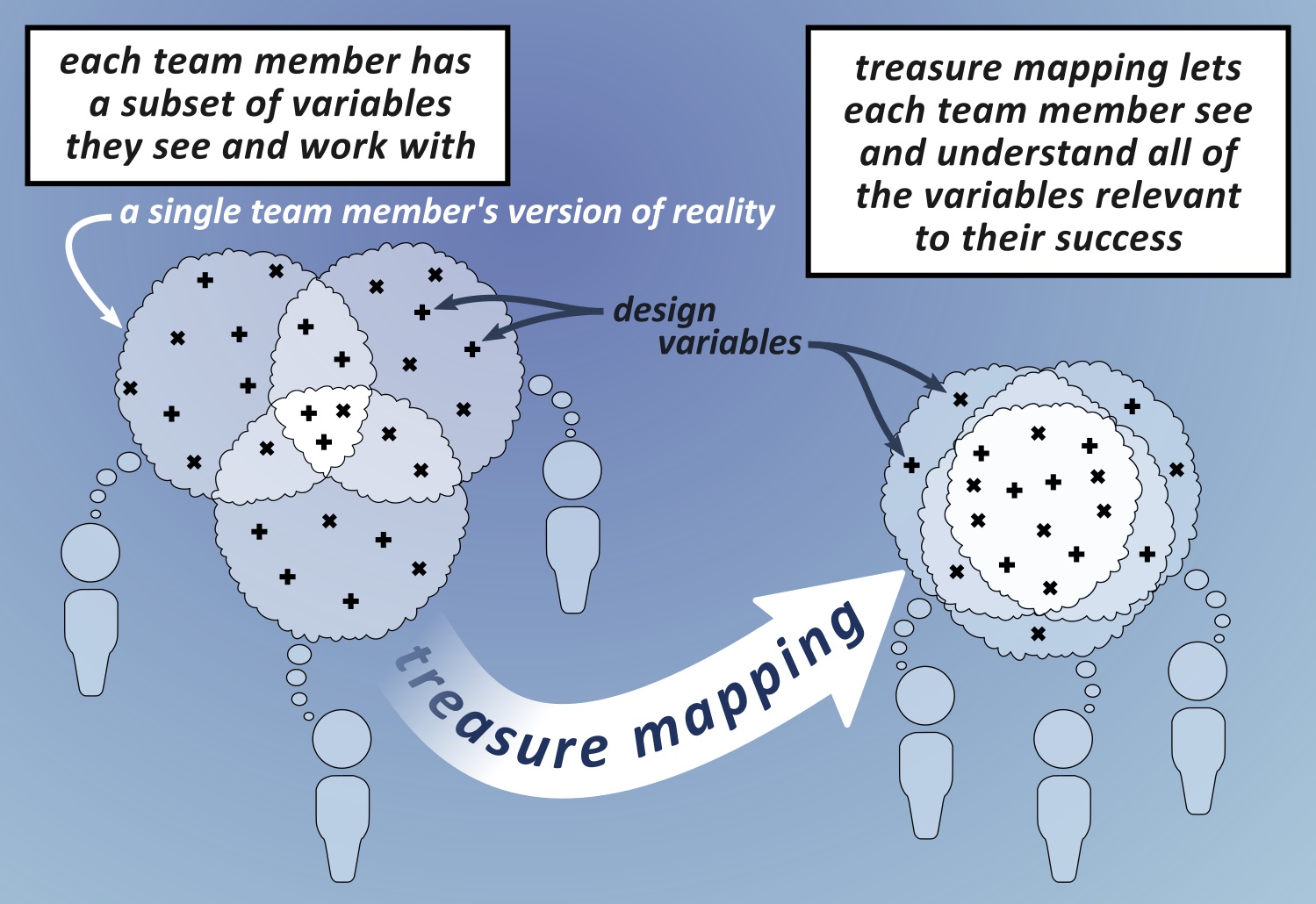
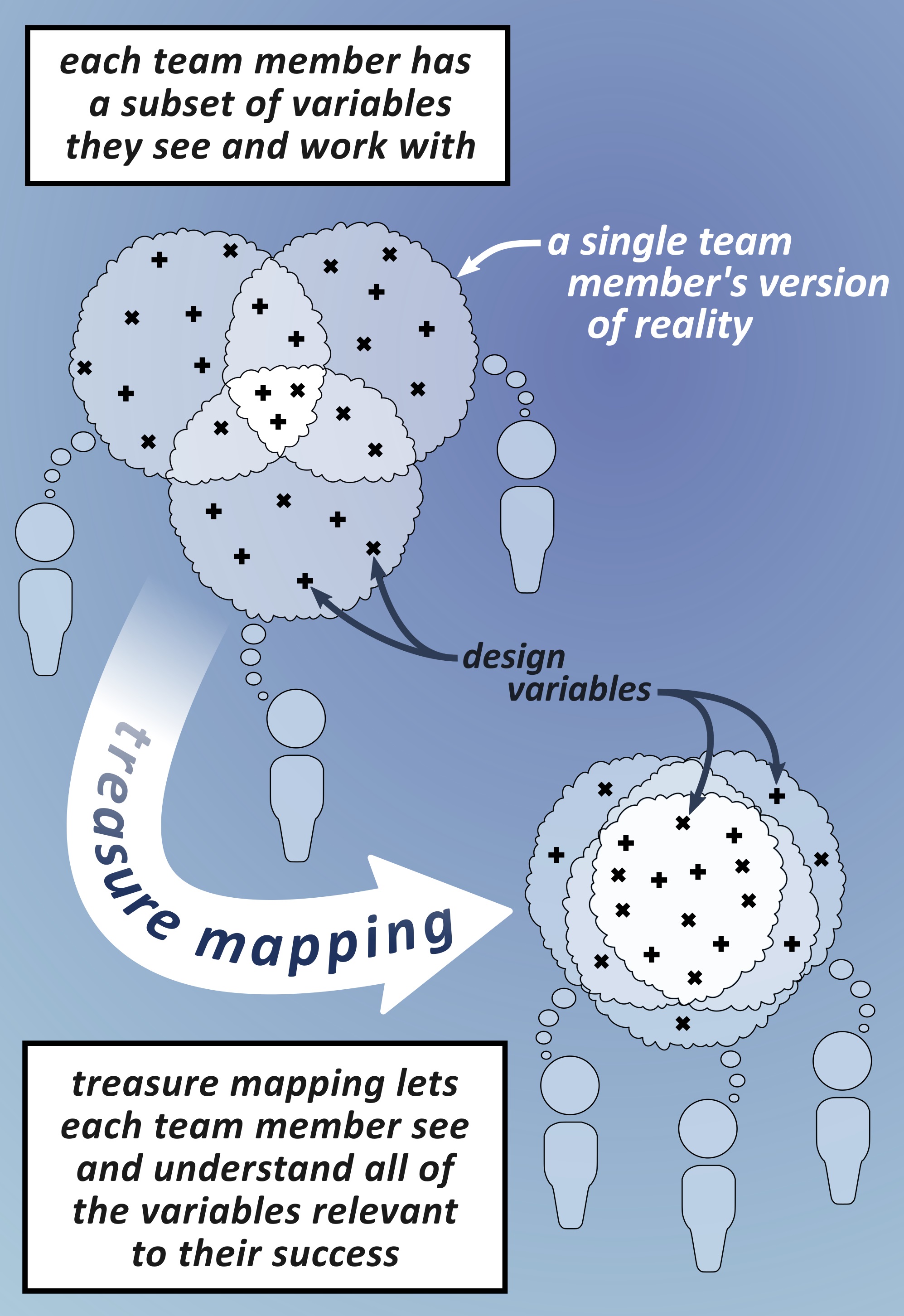
Understand your design and who does what
Meetings are unproductive because people get bored and think the person talking is just wasting time. Your design team members may even be incentivized to just shup up in order to end the meeting early, or to avoid being shamed for disagreeing with more senior staff. When your meetings are replaced with treasure mapping, every team member gets one on one attention and their concerns are not only heard, but rendered and mapped to relevant variables decisionmakers can see and understand. This lets decisionmakers weigh input without the interference of social dynamics.
Seeing the obvious decisions
This executive dashboard shows new user stories in a full-stack web app as pins penetrating through the full stack and effecting workloads in different sectors. This enables leaders to see which user stories are low hanging fruit across the whole project and better set priorities for the team. Treasure-mapping iterations often cumulate in the rendering of such dashboards so that the 'suits' can make decisions with better information.
Explaining your most complex algorithms
When you forget how your code is supposed to work you spend a lot of time trying to remember what you were doing. Frameworks try and solve this problem by establishing known patterns but sometimes your code can go beyond what the frameworks lay out and you need schematic visualizations to not only remind you of what you were doing, but to enlighten others who have never met you because you are no longer at the company while they read your code for the first time.
Algorithms for dummies
There are times whern you will want to explain your algorithms to stakeholders who are not developers or even engineers, so being able to visualize them is an essential skill.
While automated documentation tools provide a good starting point for keeping track of your code base, there will be times when these tools fall short in passing along information, especially as your code grows more complex. In those more demanding scenarios, having fully-rendered, graphically intuitive references for onboarding and collaboration become key to your success
Cheat sheets that actually get used
Your design team cannot remember everything so having centrally-referenced schematics ensures they are seeing a common picture.
Everybody hates documentation
Documentation is boring and doesn't answer the question you're looking for fast enough. You need tailored reference guides for your developers to keep track of things.
This image above is a comprehensive cheat-sheet for the Python programming language. Imagine if you had something like this built for your code base - so that your entire development team could reference it and make sure they're building new features they way you think they should be, as opposed to them going off the rails.
Universal language for outsourcing
Fully illustrated statements of work are the key to outsourcing because offshore agencies often complain that they do not understand what their American clients want them to build, and so they are forced to come up with guesses that are often wrong. This is especially true for illustrating APIs which are the key conversion points between the software product made by one team, that are in turn handed off to another team so the latter can use it to build a subsequent product
Get in touch
If you think I may be of service to your organization, please email me here to get in touch!
